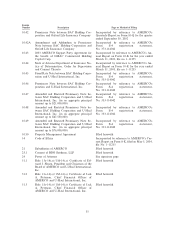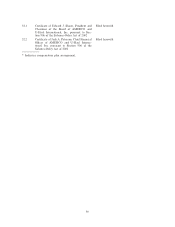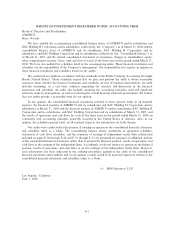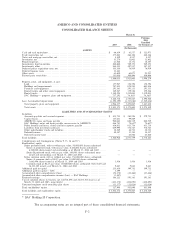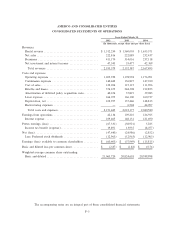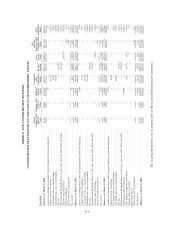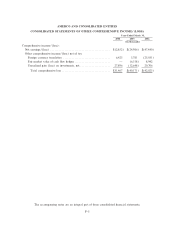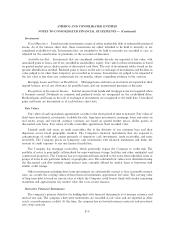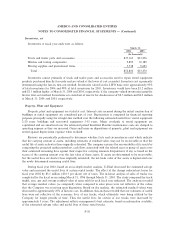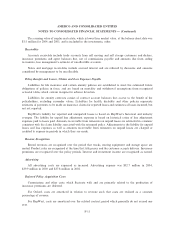U-Haul 2004 Annual Report Download - page 70
Download and view the complete annual report
Please find page 70 of the 2004 U-Haul annual report below. You can navigate through the pages in the report by either clicking on the pages listed below, or by using the keyword search tool below to find specific information within the annual report.AMERCO AND CONSOLIDATED ENTITIES
NOTES TO CONSOLIDATED FINANCIAL STATEMENTS Ì (Continued)
Investments
Fixed Maturities. Fixed maturity investments consist of either marketable debt or redeemable preferred
stocks. As of the balance sheet date, these investments are either intended to be held to maturity or are
considered available-for-sale. Investments that are intended to be held to maturity are recorded at cost, as
adjusted for the amortization of premiums or the accretion of discounts.
Available-for-Sale. Investments that are considered available-for-sale are reported at fair value, with
unrealized gains or losses, net of tax, recorded in stockholders' equity. Fair value for these investments is based
on quoted market prices, dealer quotes or discounted cash Öows. The cost of investments sold is based on the
speciÑc identiÑcation method. Realized gains or losses on the sale or exchange of investments and declines in
value judged to be other than temporary are recorded as revenues. Investments are judged to be impaired if
the fair value is less than cost continuously for six months, absent compelling evidence to the contrary.
Mortgage Loans and Notes on Real Estate. Mortgage loans and notes on real estate are reported at their
unpaid balance, net of any allowance for possible losses and any unamortized premium or discount.
Recognition of Investment Income. Interest income from bonds and mortgage notes is recognized when
it becomes earned. Dividends on common and preferred stocks are recognized on the ex-dividend dates.
Realized gains and losses on the sale or exchange of investments are recognized at the trade date. Unrealized
gains and losses are determined as of each balance sheet date.
Fair Values
Fair values of cash equivalents approximate cost due to the short period of time to maturity. Fair values of
short-term investments, investments available-for-sale, long-term investments, mortgage loans and notes on
real estate, swaps and forward currency contracts are based on quoted market prices, dealer quotes or
discounted cash Öows. Fair values of trade receivables approximate their recorded value.
Limited credit risk exists on trade receivables due to the diversity of our customer base and their
dispersion across broad geographic markets. The Company's Ñnancial instruments that are exposed to
concentrations of credit risk consist primarily of temporary cash investments, trade receivables and notes
receivable. The Company places its temporary cash investments with Ñnancial institutions and limits the
amount of credit exposure to any one Ñnancial institution.
The Company has mortgage receivables, which potentially expose the Company to credit risk. The
portfolio of notes is principally collateralized by mini-warehouse storage facilities and other residential and
commercial properties. The Company has not experienced losses related to the notes from individual notes or
groups of notes in any particular industry or geographic area. The estimated fair values were determined using
the discounted cash Öow method, using interest rates currently oÅered for similar loans to borrowers with
similar credit ratings.
Other investments including short-term investments are substantially current or bear reasonable interest
rates. As a result, the carrying values of these Ñnancial instruments approximate fair value. The carrying value
of long-term debt is based on current rates at which the Company could borrow funds with similar remaining
maturities and approximates fair market value due to its recent issuance.
Derivative Financial Instruments
The company's primary objective for holding derivative Ñnancial instruments is to manage currency and
interest rate risk. The company's derivative instruments are recorded at fair value and are reported as other
assets, accrued expenses, or debt. At this time, the company has no forward currency contracts and no interest
rate swap contracts.
F-9


